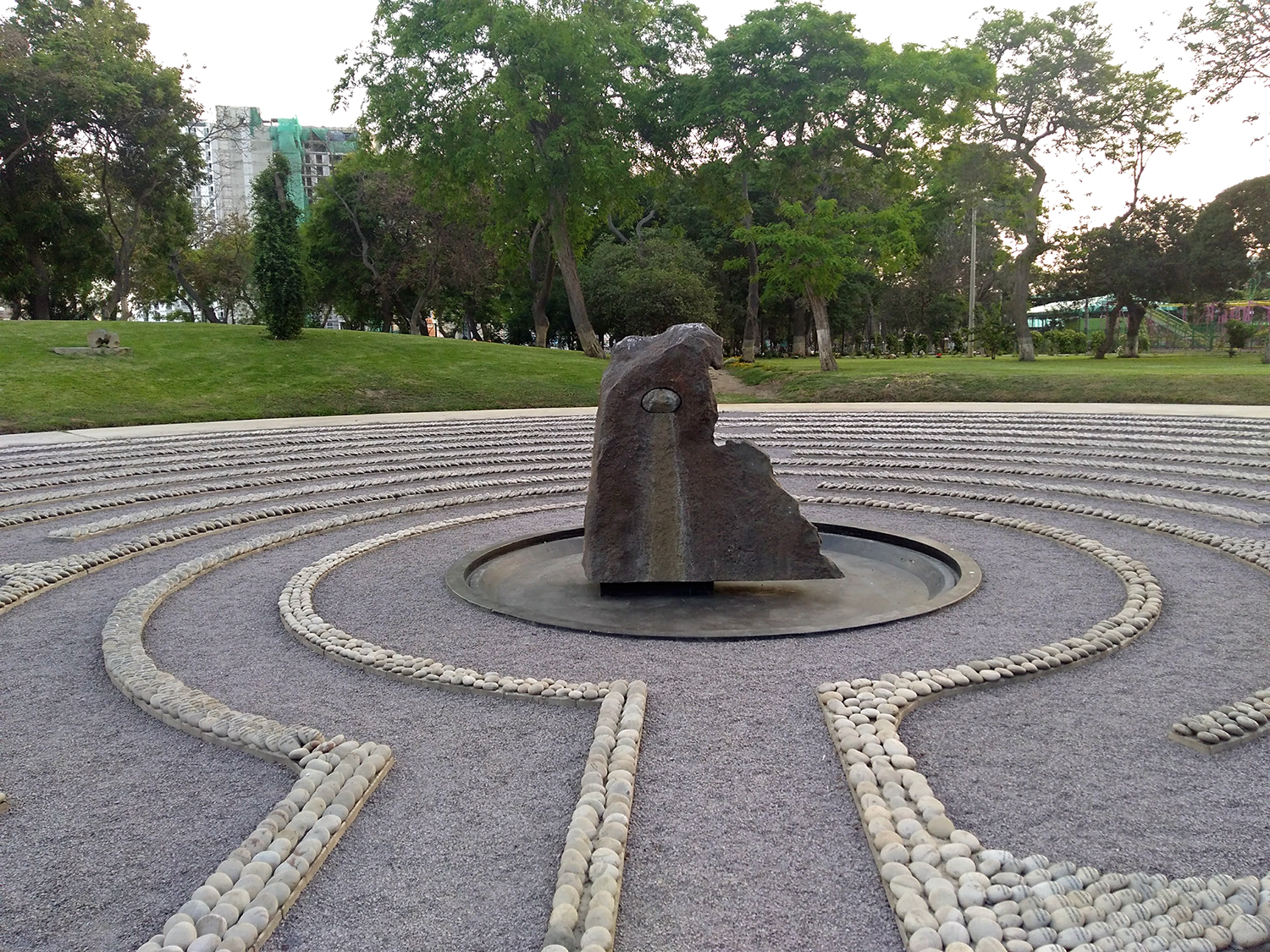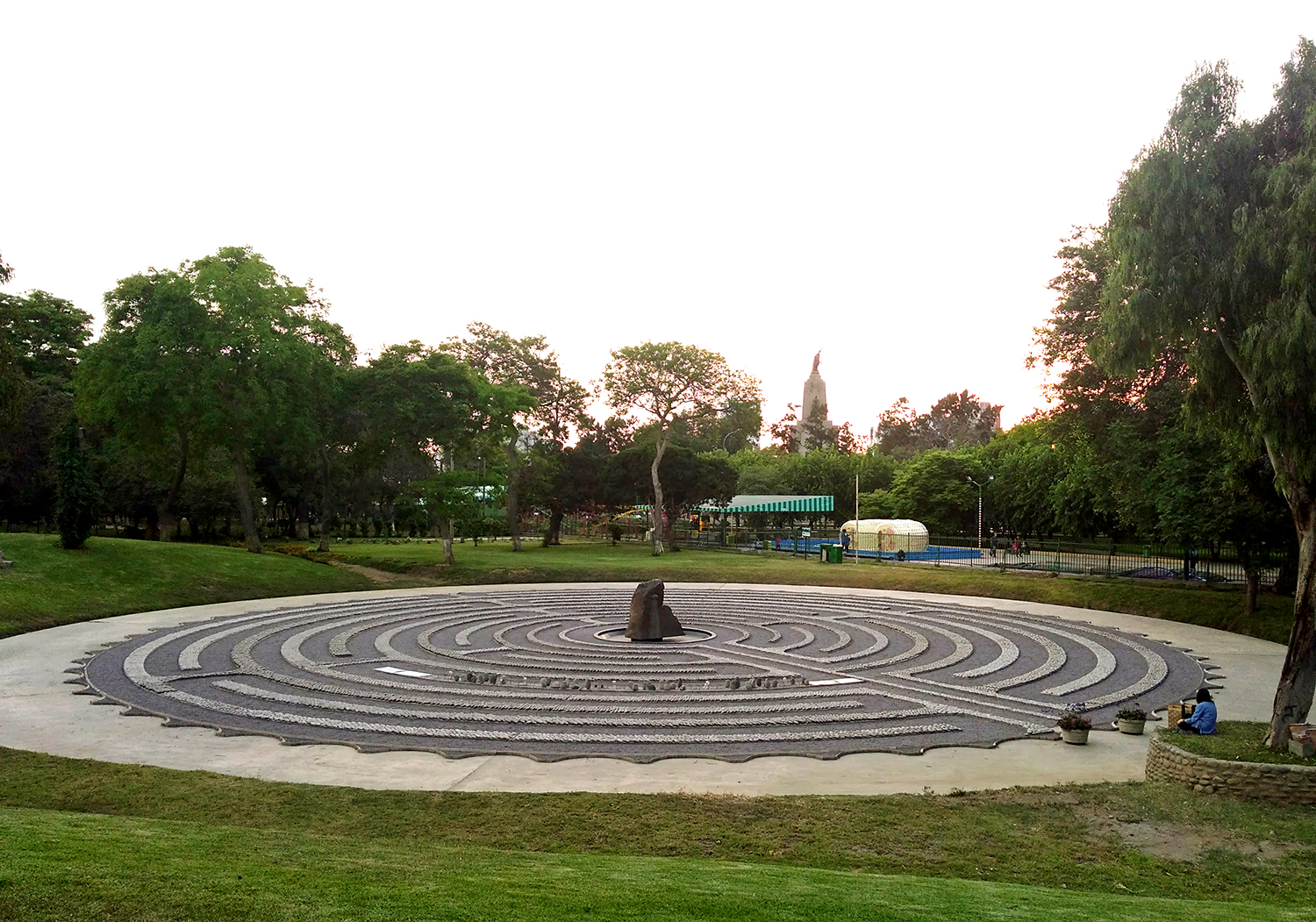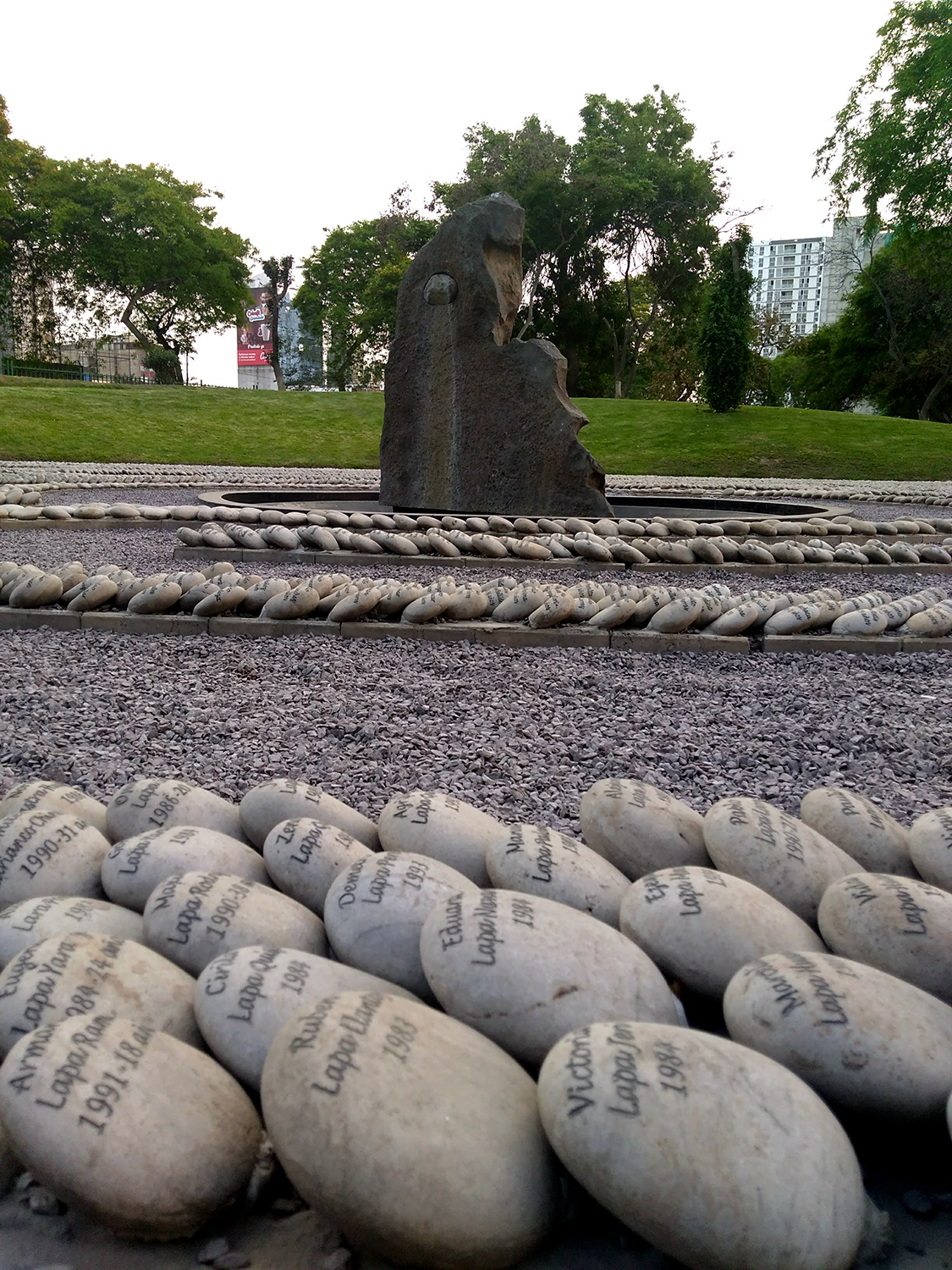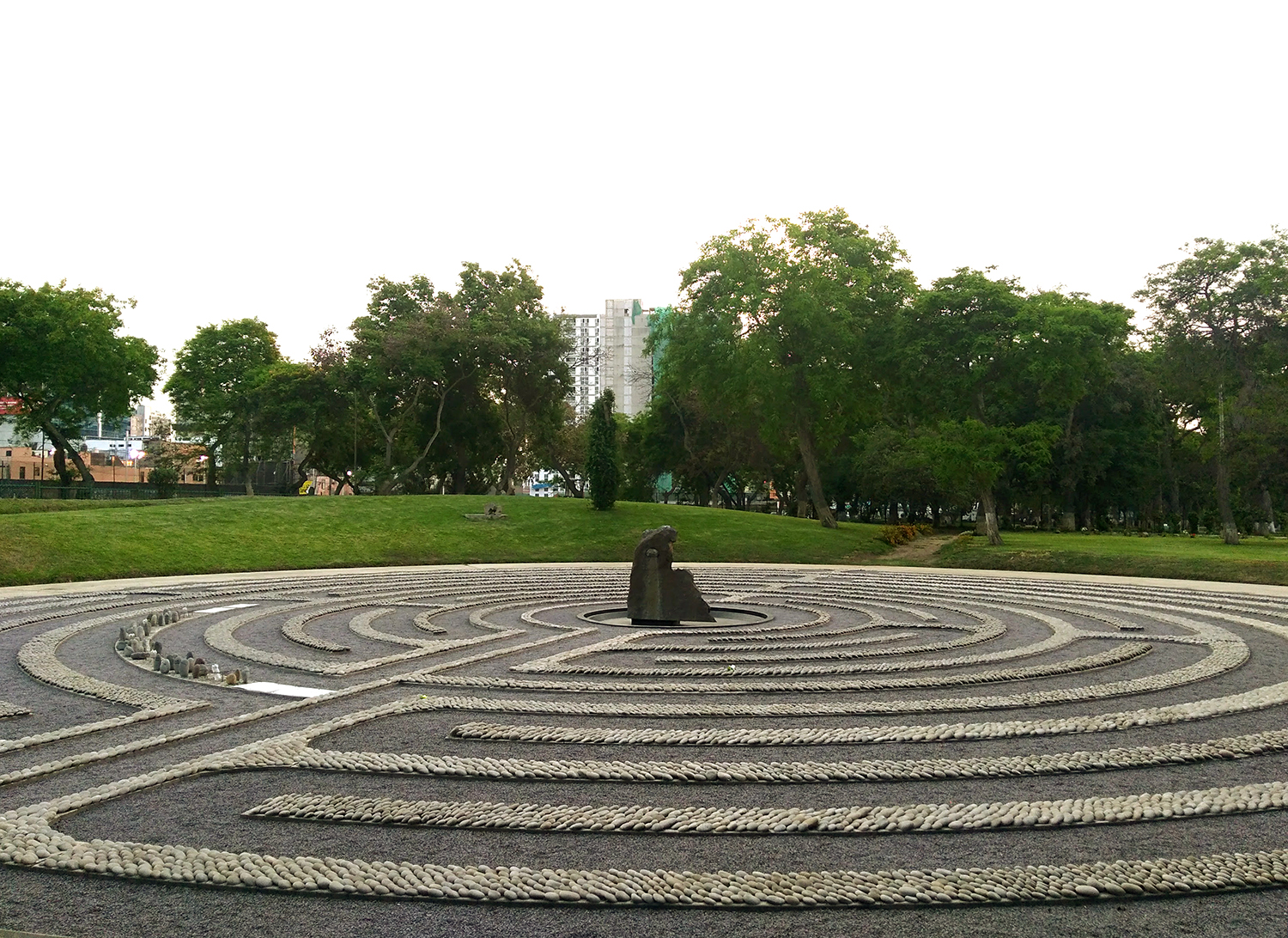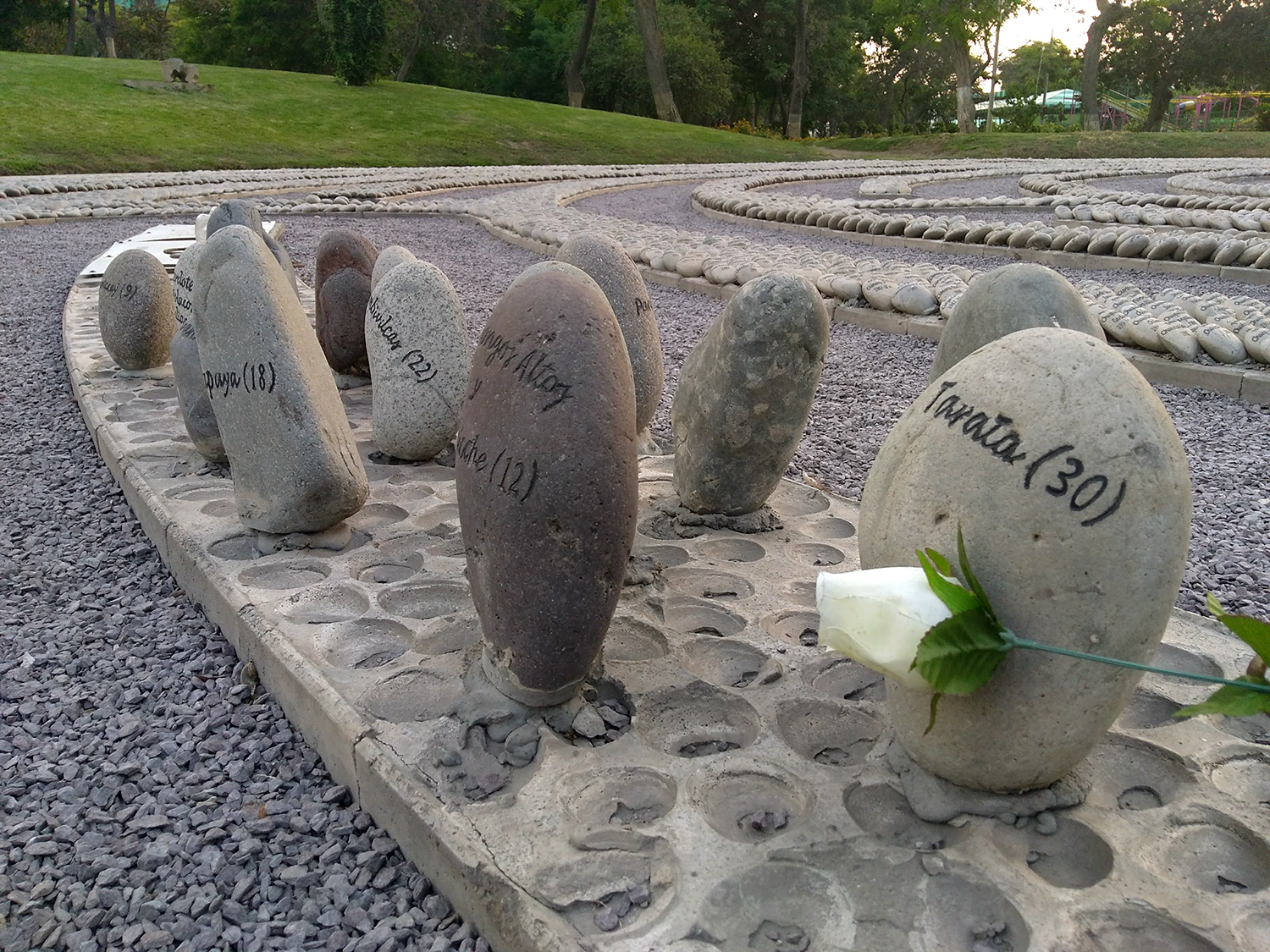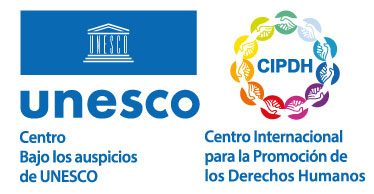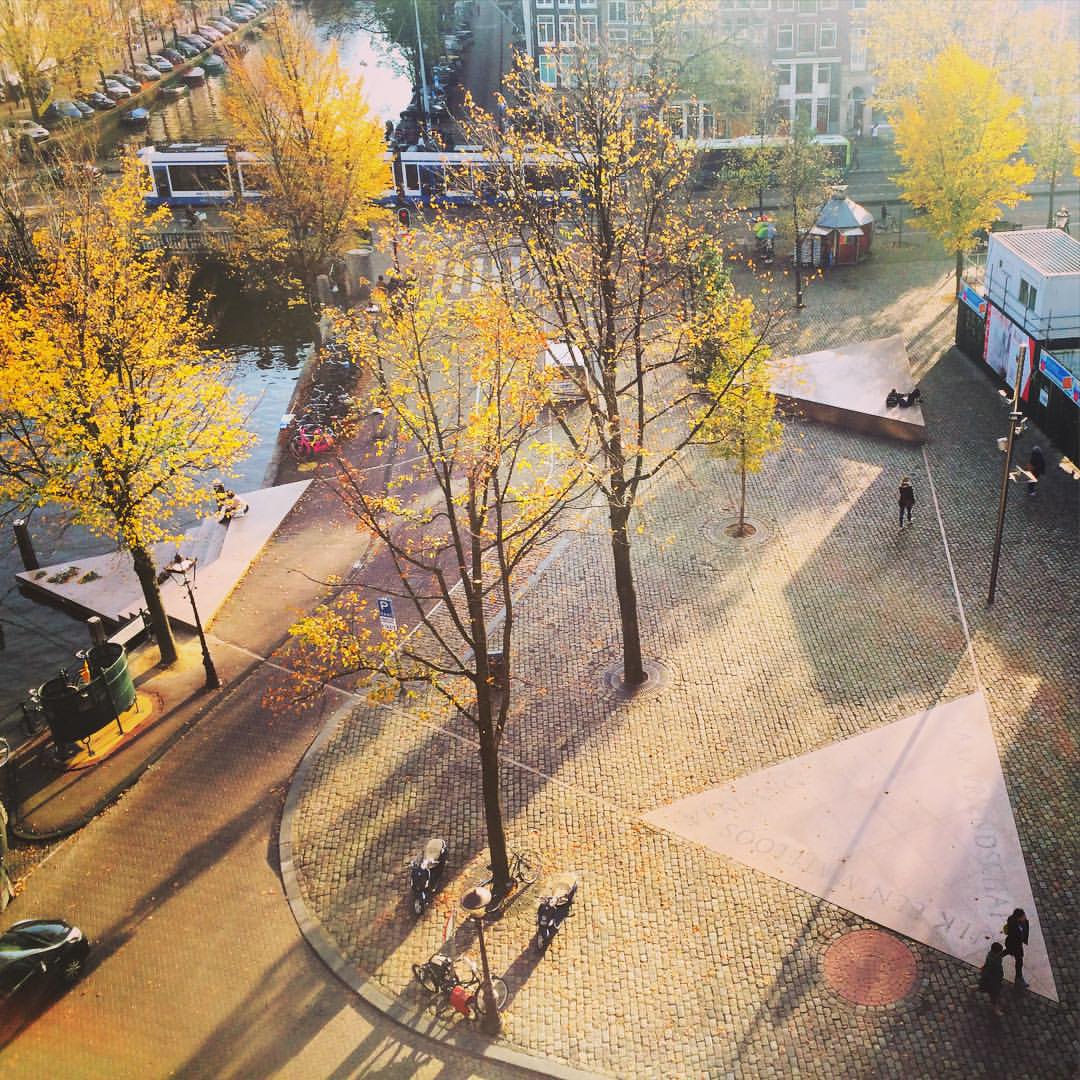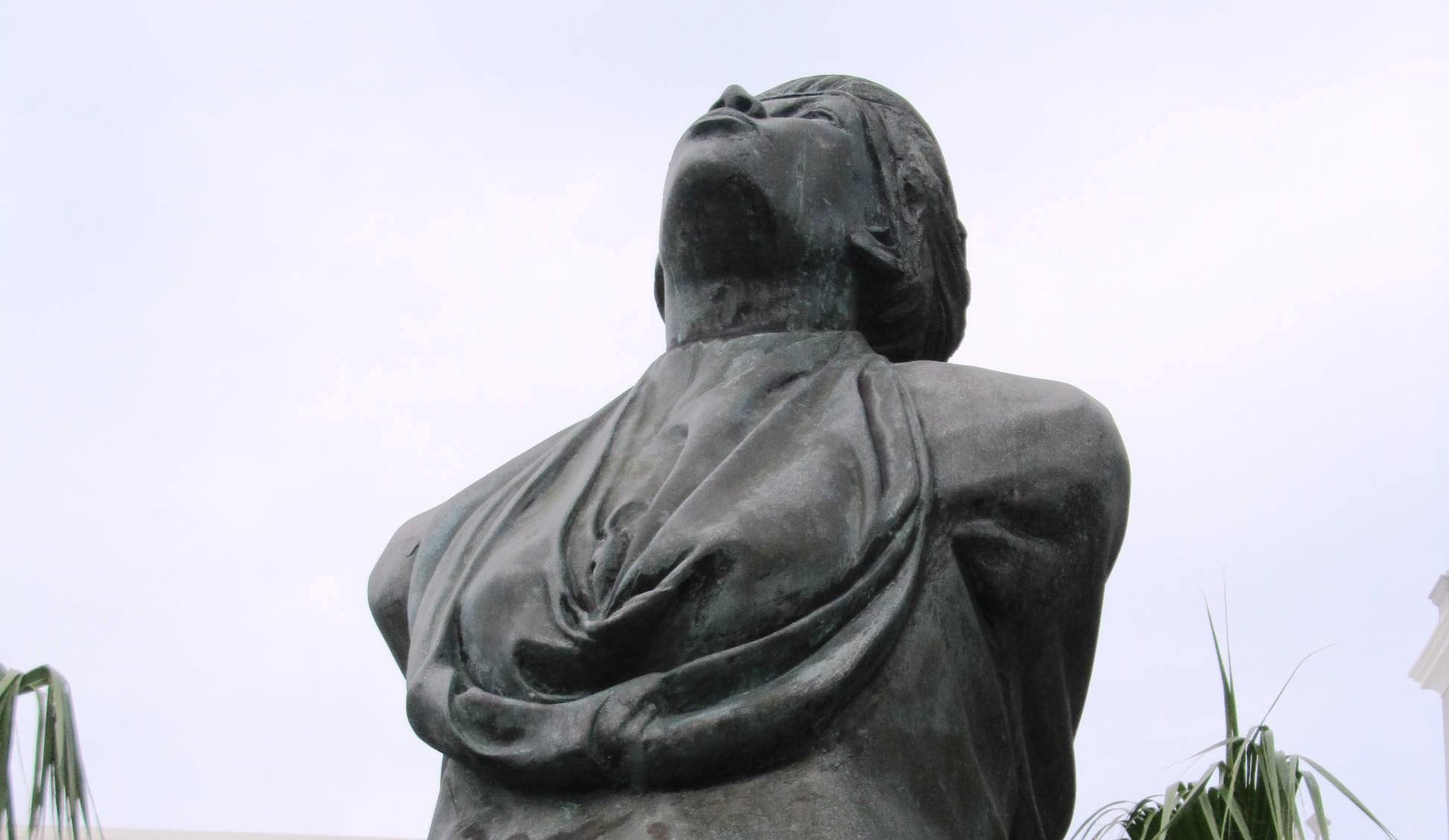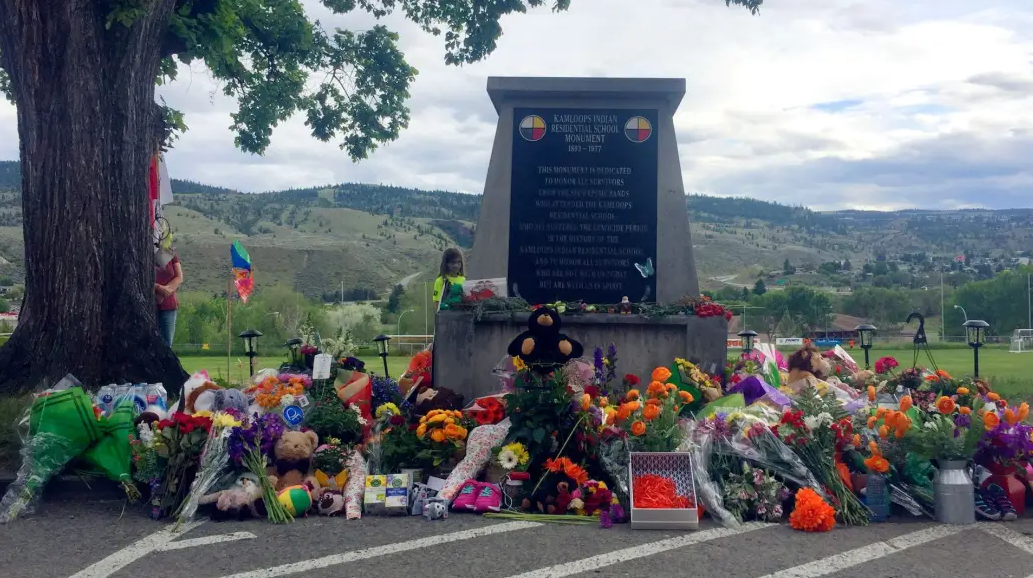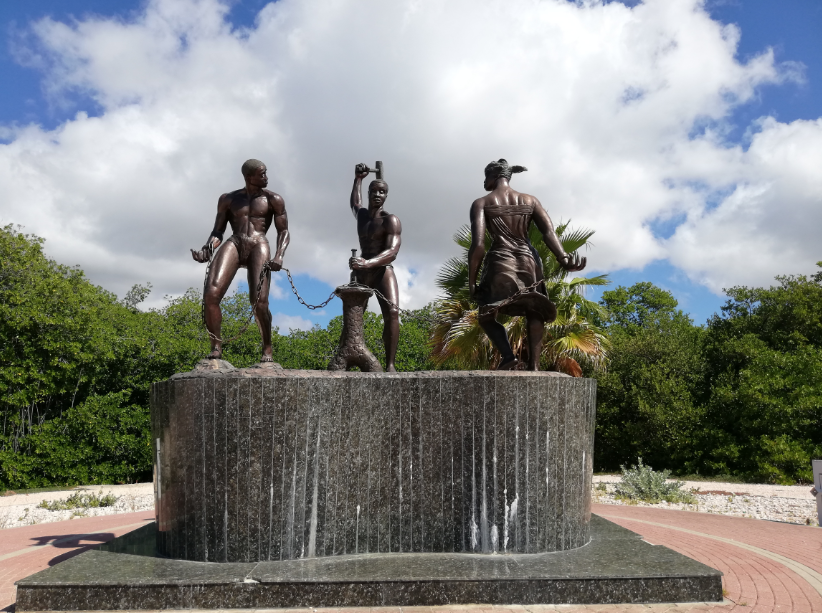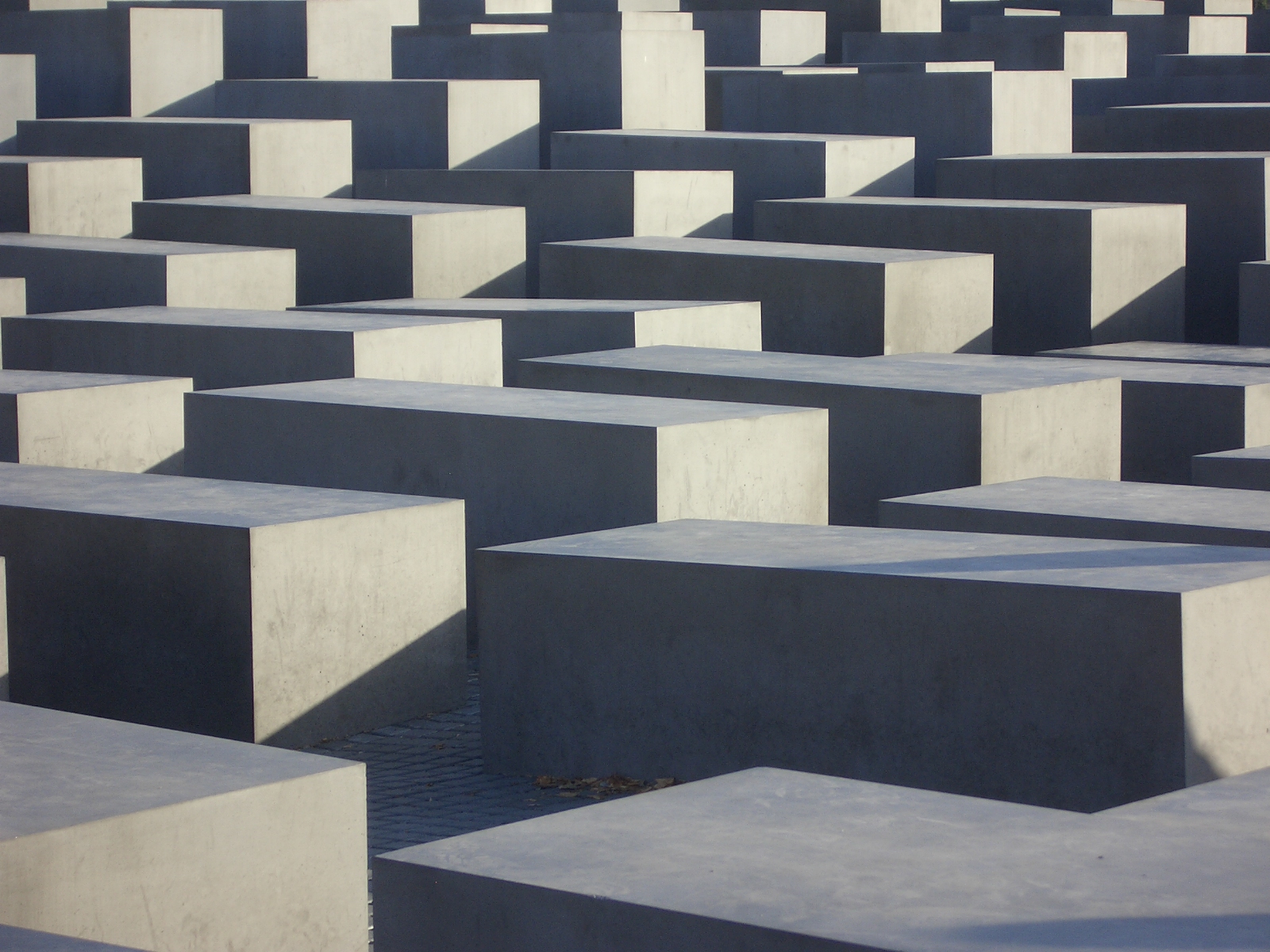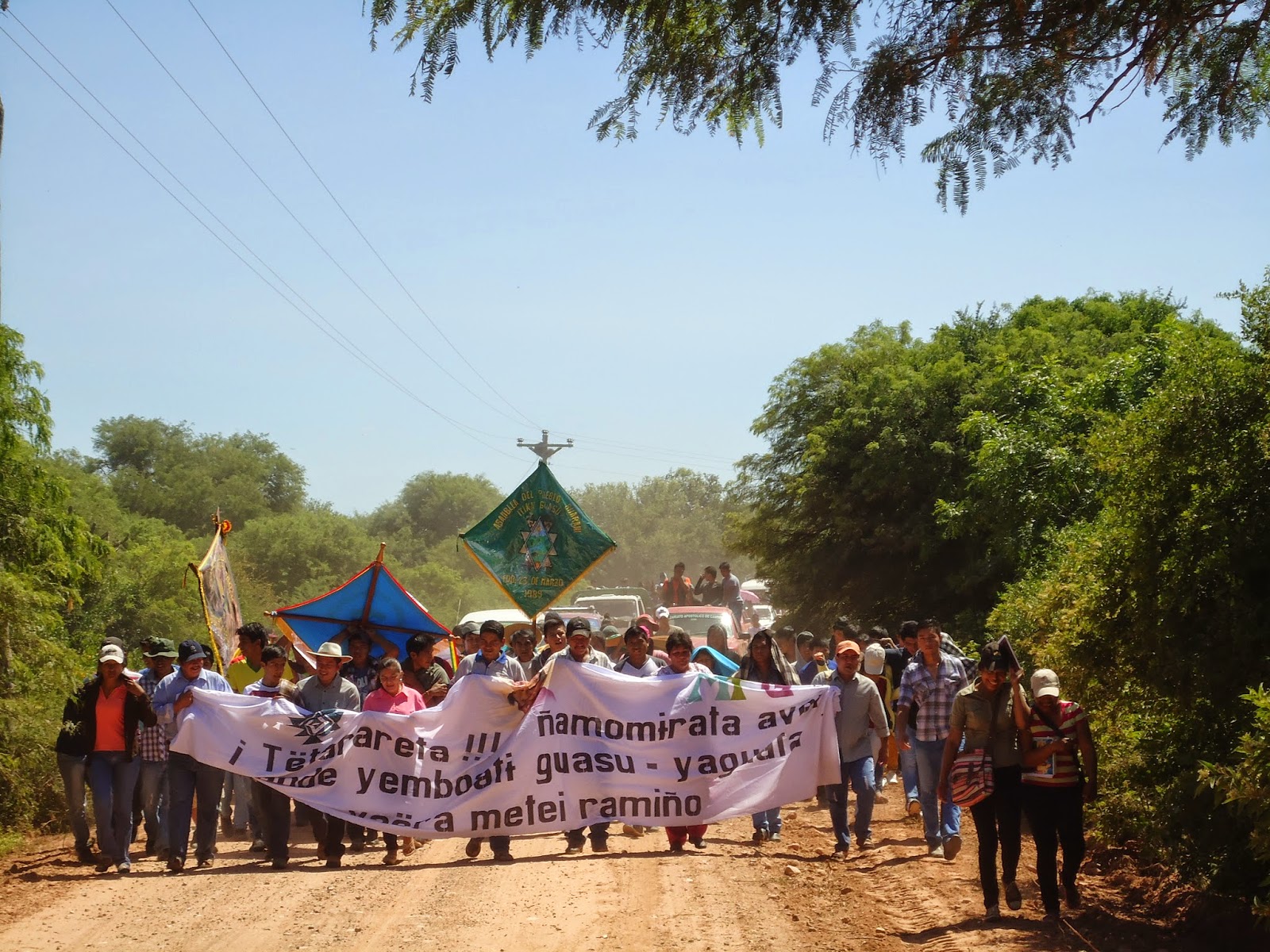El ojo que llora (The Eye that Cries)
Monument
Theme: Armed conflict

Address
Campo de Marte
Country
Peru
City
Lima
Continent
America
Theme: Armed conflict
Purpose of Memory
The commemorative sculpture honors and preserves the memory of the victims of the internal armed conflict that took place in Peru between 1980 and 2000.
Institutional Designation
El ojo que llora
Date of creation / identification / declaration
2005
Public Access
Free
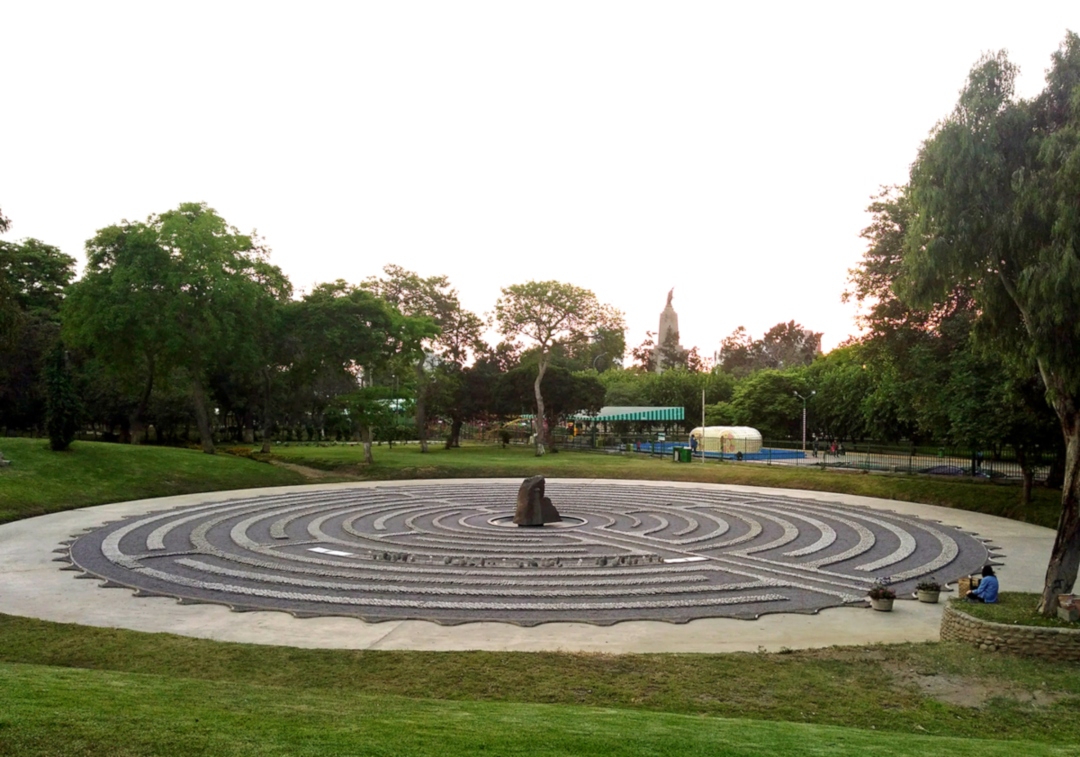
Location description
“The Eye that Cries” is a commemorative sculpture placed in the memorial space The Memory Alameda in the City of Lima. It is the core work of this place, which has other spaces that describe the period of internal war in Peru. It is located in the center of a monument whose whole structure is 1500 square meters. The sculpture is a monolith made of granite of about one meter height from which drops continually flow into the water well that surrounds it. Eleven circles made of stones (boulders) are arranged around this center, as a labyrinth. Each stone bears the name, age and date of death or disappearance of the victim. The labyrinthine path allows the visitor to pass by each boulder.
The democratic transition in Peru began to consolidate with the 1979 Constitution, which removed all restrictions the right to vote had. Víctor Raúl Haya de la Torre, president of the Constitutional Assembly, signed the new Constitution, which represented a turning point against the military governments that had been installed since 1968.
However, at the beginning of 1980, a period known as the “internal war” began, which lasted twenty years. The Peruvian Communist Party – Sendero Luminoso (PCP-SL) became one of the numerous Peruvian radical left groups that proclaimed the need for armed struggle to seize power. In 1982 a new group appears: the Movimiento Revolucionario Túpac Amaru (Tupac Amaru Revolutionary Movement or MRTA). The different governments replied to the popular uprisings mainly in a military manner, which ended up intensifying the conflict.
The Truth and Reconciliation Commission, in its Final Report (2003), revealed the number of victims of political violence that took place between 1980 and 2000. It is estimated that around 70,000 persons were victims of violence (mainly dead and enforced disappeared) during that period. It was also mentioned that there were more than 40,000 orphans, as well as 600,000 inhabitants displaced from their territories as a consequence of the internal war that had an impact mainly on the Departments of Ayacucho, Apurímac, Junín, Huancavélica and San Martín.
The Eye that Cries was created by sculptor Lika Mutal. It was unveiled on 28 August 2005 thanks to the efforts of several civil society institutions and the Municipality of Jesús María (Lima District), which accepted to implement the proposal at Campo de Marte. The monument was built to honor the victims of the internal armed conflict that took place in Peru between 1980 and 2000. The Eye that Cries is part of a bigger project called The Memory Alameda, which adds more green areas and where hillocks are expected to be developed and new trees are expected to be planted. The sculpture is placed in the center of a monument made of stone, which accompanies the Yuyanapaq photographic exhibition, that inspired Lika Mutal. The exhibition is shown in a museum that connects an underground gallery to the visitors center of the architectonic complex, which is also home of the so-called “Quipu de la memoria”. This collective project recreates the communication system of the Incas and has hundreds of thousands of knots that include 69,280 knots representing the number of victims of political violence recorded by the Truth and Reconciliation Commission. This is intended to visually complement the long speech of the Final Report and to depict the theme of the commemoration of victims in the social imaginary.
In 2006, the monument became subject to controversy when the names of senderistas murdered in Castro Castro prison in 1992 were unveiled. Despite criticism and the acts of vandalism that the monument has suffered on many occasions, “The Eye that Cries” is a reference to the memorialization processes that Peruvian society has undertaken. The sculpture has inspired victims from other parts of the country to build their own monuments. In Toraya, one of the communities of Apurímac most afflicted by the internal conflict, “The Eye that Cries of Llinque” was unveiled in 2016. In 2013, the monument was declared cultural heritage of Peru.
